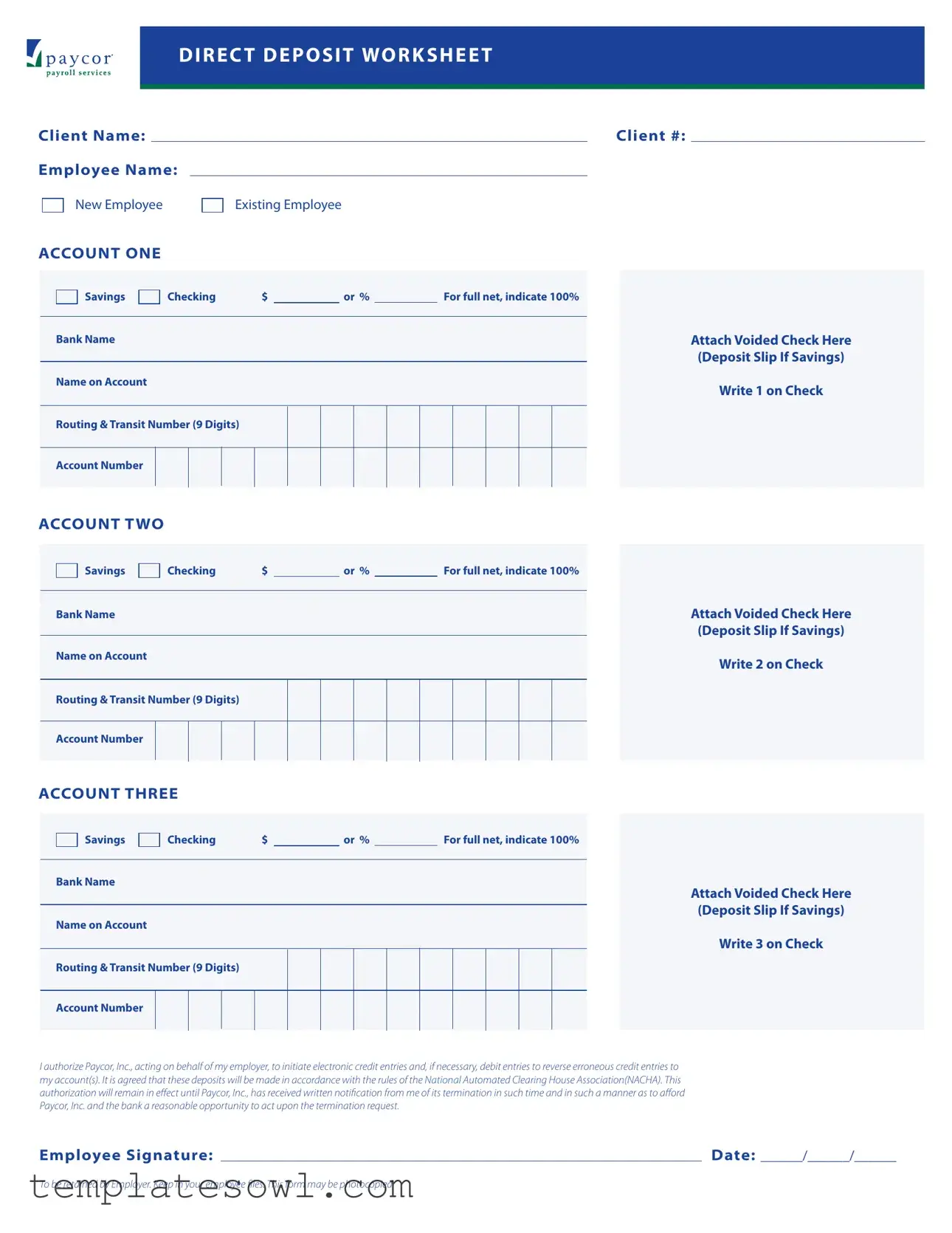What is the purpose of the Paycor Direct Deposit form?
The Paycor Direct Deposit form is designed to facilitate the direct deposit of your payroll checks into your bank account. By completing this form, you authorize your employer to deposit your wages electronically, which can ensure that you receive your funds quickly and securely. It eliminates the need for paper checks, making the payment process more efficient for both you and your employer.
How do I complete the form correctly?
To complete the Paycor Direct Deposit form, you will need to provide specific information for each account you wish to use for direct deposits. For each account, indicate whether it is a savings or checking account. You should also include the bank name, your name on the account, and attach a voided check or deposit slip. Make sure to write the account number and routing number (nine digits) accurately. If you wish to allocate a specific percentage of your paycheck to multiple accounts, clearly specify that as well.
What do I need to attach to the form?
You will need to attach a voided check for each checking account, or a deposit slip for each savings account that you are using for direct deposit. This attachment is crucial as it provides your bank’s routing number and account number, ensuring that funds are deposited into the correct accounts without any errors.
How long does it take for direct deposit to start?
The timeframe for setting up direct deposit can vary. Generally, it may take one to two pay cycles after your employer receives and processes your completed Paycor Direct Deposit form. However, this can depend on your employer's payroll schedule and their internal processing times. During this period, it is a good idea to continue monitoring your bank account for any deposits.
Can I change my direct deposit information later?
Yes, you can change your direct deposit information. If you need to alter the accounts or bank details you provided previously, you simply need to fill out a new Paycor Direct Deposit form and submit it to your employer. Just ensure that you do this in a timely manner, allowing your employer sufficient time to process your request before your next payroll date.

